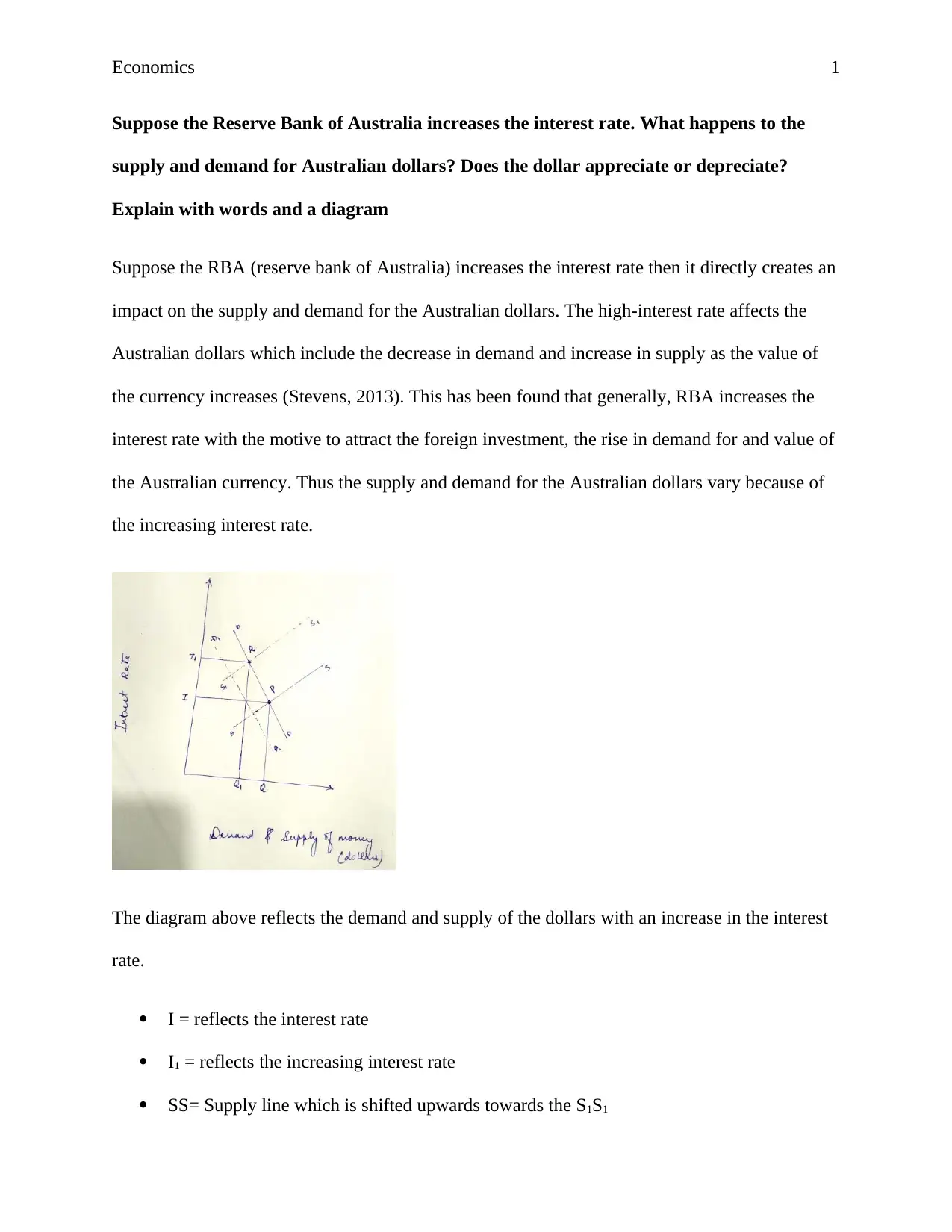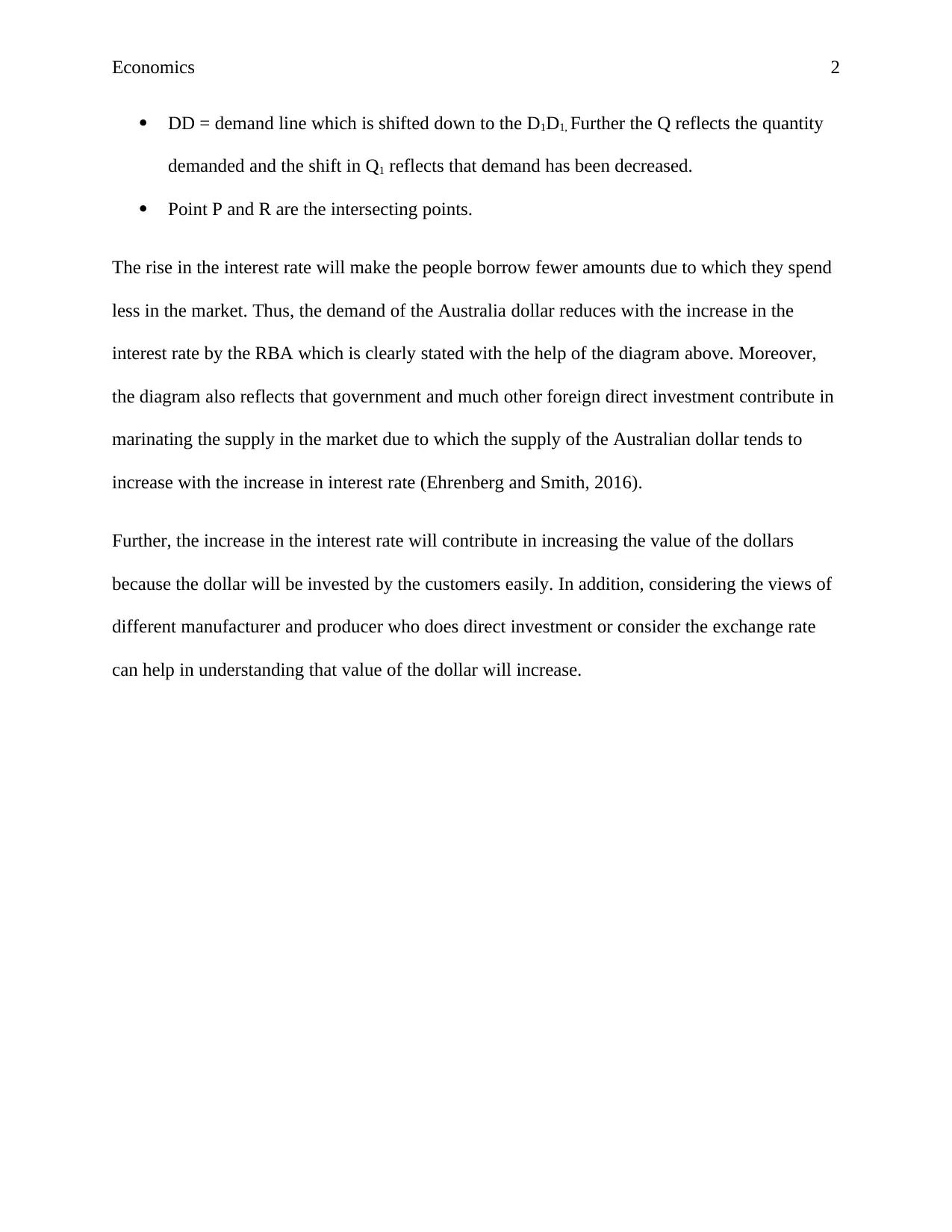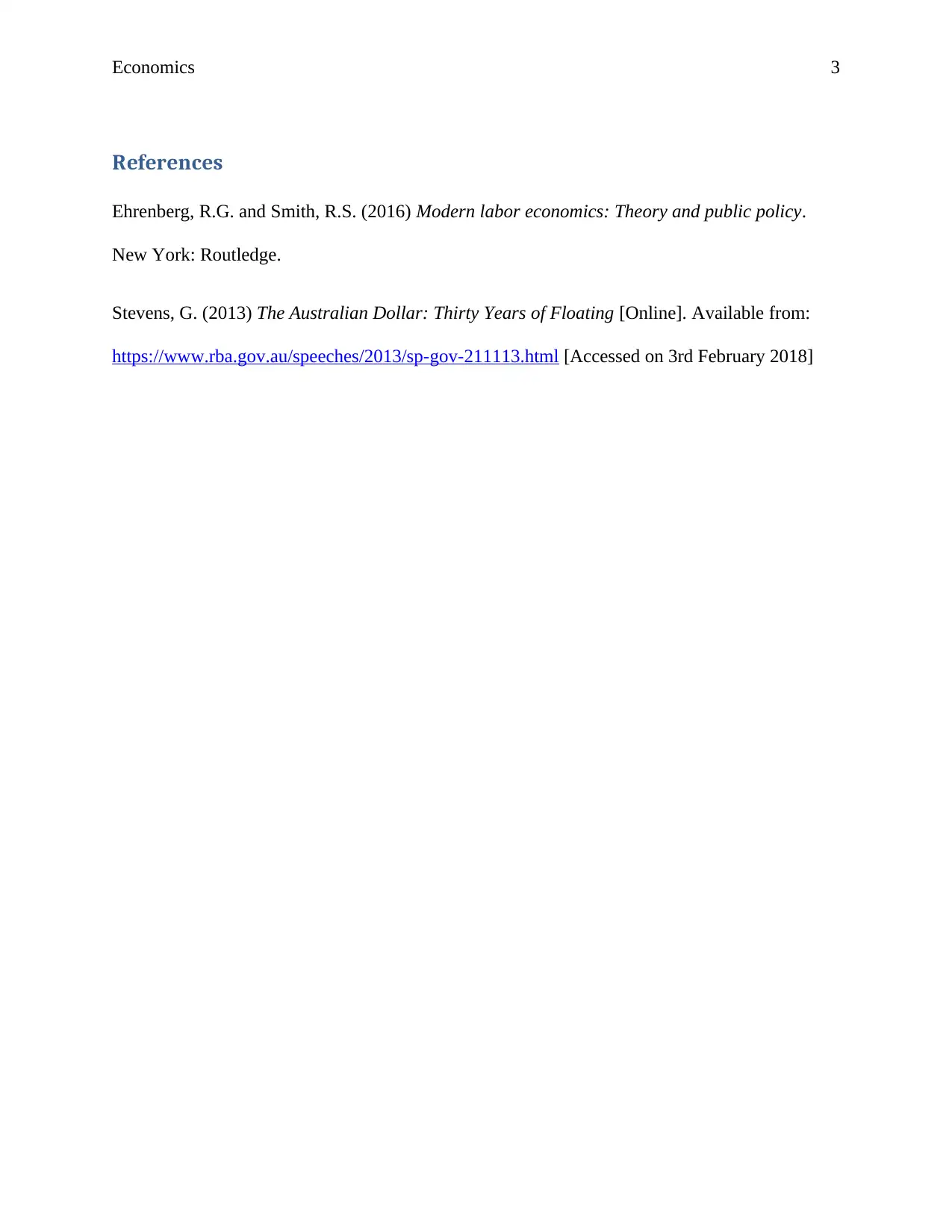Reserve Bank of Australia's Interest Rate and Australian Dollar
VerifiedAdded on 2023/04/26
|4
|459
|326
Homework Assignment
AI Summary
This assignment examines the effects of an increase in the Reserve Bank of Australia's (RBA) interest rate on the supply and demand for Australian dollars, and its subsequent impact on the currency's value. The analysis explains that a higher interest rate typically leads to a decrease in demand and an increase in supply of the Australian dollar as it attracts foreign investment. The provided diagram illustrates these shifts in supply and demand curves, demonstrating how an increased interest rate influences borrowing and spending behaviors. It further discusses how government and foreign direct investment contribute to maintaining supply in the market. Ultimately, the assignment concludes that an increase in the interest rate tends to increase the value of the Australian dollar, as it becomes a more attractive investment option. The analysis incorporates perspectives from manufacturers and producers to provide a comprehensive understanding of the relationship between interest rates and currency value.
1 out of 4










![[object Object]](/_next/static/media/star-bottom.7253800d.svg)